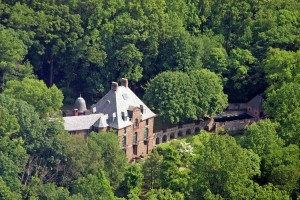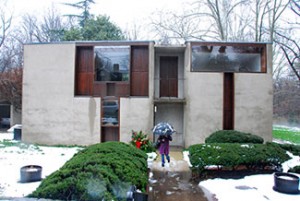
High Hollow, George Howe, arch., 1917
I live in a neighborhood with many old houses. There are plenty of late nineteenth-century examples, but the ones I like best are from 1900-1930. The acknowledged masterpiece of this period is George Howe’s High Hollow, but there are plenty of runners-up, the work of accomplished Philadelphia residential architects such as Wilson Eyre, Frank Miles Day, Robert Rodes McGoodwin, H. Louis Duhring, and Edmund Gilchrist. These old houses seem to improve with age—the slate roofs get a bit mossy, the stonework acquires a patina, and the heavy hardware gets burnished with use. Their architects worked in more or less revival styles, and because they acknowledged the past, the passage of time has been kind to their creations. Indeed, these houses probably look better today than when they were spanking new. In contrast, the handful of mid-twentieth-century works by Louis Kahn, Robert Venturi, and Romaldo Guirgola, seem embalmed, caught in the moment of their construction. It is not just a question of materials, although smooth stucco tends to weather poorly, and tar-and-gravel roofs don’t age gracefully. It has to do with their disconnection from history. Modern houses look their best on Day One, when they are new, fresh, unsullied by use or time. It is all downhill after that.

Esherick House, Louis Kahn, arch., 1959

